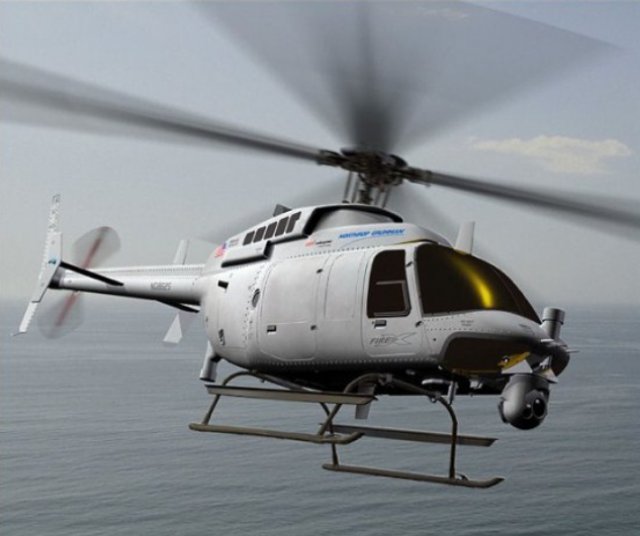 Bell/Northrop Grumman MQ-8C ‘Fire X’
Bell/Northrop Grumman MQ-8C ‘Fire X’
The US Navy has cancelled its medium-range maritime unmanned air system (MRMUAS) programme, which was to produce a vertical-lift UAS to provide intelligence, surveillance and reconnaissance services for up to 8 hours.
The contest was hotly anticipated by established companies including Boeing, Lockheed Martin and Northrop Grumman, as well as newcomers such as AVX.
The programme, which drew co-operation and participation from the US Army, had been the subject of intense speculation prior to the decision.
“The MRMUAS programme was terminated, because as we looked at what we have to provide to ground forces and naval needs, the [Northrop MQ-8 Fire Scout], as it moves from the B to the C model, was felt that was enough in terms of what we need there,” the navy said. The service plans to buy 28 of the new type.
The MQ-8B, based on the Schweizer 333 helicopter, has previously been criticised for its relatively poor performance. The MQ-8C ports virtually the same operating software to a Bell 407 platform, allowing for significantly longer range and endurance, as well as greater lifting capacity.
The MQ-8B has deployed once on an operational cruise, where an aircraft was shot down over Libya last year. The type is currently deployed on the USS Simpson – which the navy said is heading for West Africa – and to Afghanistan, where the Fire Scout provides intelligence, surveillance and reconnaissance services.
Amongst other programme tweaks, the unmanned, carrier-launched surveillance and strike programme – a nascent effort to provide a carrier-launched unmanned combat aircraft – has been delayed. Initial entry into service will slip by two years, to fiscal year 2020.
Source: Flight Global
